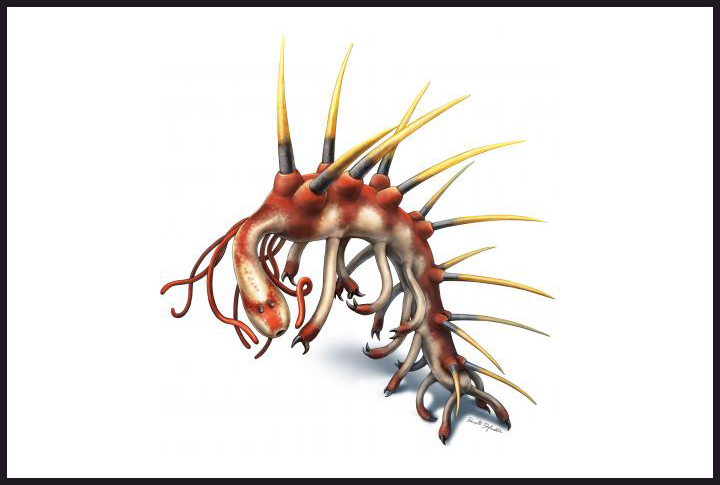TORONTO — Scientists knew that this creature roamed Earth half a billion years ago. They also knew that it was worm-like but with legs and spikes. What they didn’t know was where its head was — until now.

Researchers from the Royal Ontario Museum (ROM), the University of Toronto and the University of Cambridge finally found the head of the Hallucigenia, so named due to its rather strange appearance. They also found a ring of teeth, a throat lined with needle-like teeth and simple eyes. Their findings were published in the scientific journal Nature.
“Prior to our study there was still some uncertainty as to which end of the animal represented the head, and which the tail,” said Dr Martin Smith, a postdoctoral researcher in Cambridge’s Department of Earth Sciences, and the paper’s lead author. “A large balloon-like orb at one end of the specimen was originally thought to be the head, but we can now demonstrate that this actually wasn’t part of the body at all, but a dark stain representing decay fluids or gut contents that oozed out as the animal was flattened during burial.”
Freaky creature, indeed.
Hallucigenia was one of the most bizarre and puzzling ancient creatures discovered by paleontologists. They just couldn’t figure this guy out.
First, the spines were thought to be legs. Its legs were thought to be tentacles. And its head was thought to be its tail. Even once it was all sorted out, hallucigenia was clearly a wonderfully strange creature: Living on the floor of the Cambrian oceans, this bizarre little guy measured between 10 to 50 mm in length, it had pairs of long spines along its back, seven pairs of legs that had claws and three pairs of tentacles on its neck.
Arthropods include spiders, insects, centipedes and even lobsters, crabs and scorpions. All of these creatures have something in common: they moult, or shed skin.
The tricky part was linking the hallucigenia to modern-day animals. In 2014, however, research from the University of Cambridge figured out — mostly by studying its claws — that it was linked to modern-day velvet worms.
The researchers made the discovery using electron microscopy to study fossils from the ROM and the Smithsonian Institution.


Comments